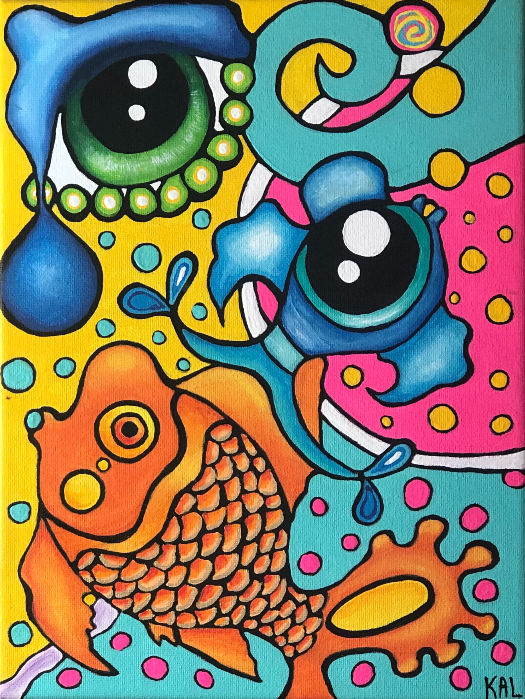The Ethics of the Unreal: Truth-Telling Through Dream Logic in MIS Art
- Kimberley A. Lombardi

- Jul 21
- 3 min read
Multidimensional Intuitive Surrealism (MIS) is not a genre of spectacle—it is a genre of testimony. Its visuals do not seek to convince or prove, but to invoke. To create unreal images that feel truer than realism requires a vow: not to deceive, not to simulate, not to use aesthetic distortion as disguise. MIS art is distortion as declaration. It is
atmosphere over illusion, symbol over claim.

Unreal Doesn’t Mean Untrue
There is an unspoken hierarchy in the world of images: realism is often praised as truth, while abstraction is treated as obfuscation. MIS rejects that hierarchy. In MIS, distortion is a method of revelation—it clarifies what realism cannot name.
MIS visuals soften sharp edges, mute the hunger for detail, and prioritize what lingers. The goal is not fantasy, nor delusion. It is poetic witnessing. Truth in MIS is emotional, sensory, and intuitive.
Atmosphere vs. Illusion
A defining trait of MIS visual work is the refusal to simulate. The genre may explore mythic landscapes, surreal compositions, or nautical overlays—but it does not use image to "prove" an experience. MIS honors intuition without making evidentiary claims.
Textures, thresholds, fragments, and negative space are favored over spectacle. A good MIS piece leaves a door open, not a declaration sealed. The goal is not to show “what happened”—but to honor what swims, what stirs, what ripples.
The Artist’s Code
To create within MIS is to hold a delicate ethical line. These are some core vows many MIS artists keep:
MIS art evokes what is felt but never insists what occurred. Its vow is emotional resonance, not visual validation.
MIS art is hand-fashioned, ritual-laden, and deeply intuitive. Atmosphere emerges through material presence, not algorithmic simulation. Style evokes emotion, not confirms experience.
Visual ambiguity is sacred. What is unfinished speaks more loudly than what is over-rendered.
Images do not posture—they invite. MIS is visual ritual, not aesthetic argument.
These codes protect the genre’s integrity. They also form a quiet rebellion against the trend of visual persuasion: MIS resists the algorithmic push toward clickbait clarity.
Case Studies in Ethical MIS Art
MIS works often hide more than they reveal. A few forms that align with this ethos:
Soft distortion photography: Blurred focus, natural grain, color bleeding—as if the image is being remembered, not recorded.
Surreal seasonal illustrations: Archetypes half-visible in foliage, clouds, or decay. Nothing explained—everything felt.
Composite rituals: A blending of emotion and memory across time—collage used not to juxtapose but to dissolve.
MIS artists understand that the power of visual work lies not in clarity, but in cadence.
An Invitation to Create
If MIS calls to you, you are invited to create not with certainty, but with sensitivity. Ask yourself:
What does an unanswered feeling look like?
How do you represent the unseen without pretending to have seen it?
Can you evoke presence without explaining its origin?
MIS art welcomes those willing to distort reality for the sake of deeper truth—not louder claims.
Let your visuals whisper. Let them ache. Let them resist the need to be believed, and instead become something more intimate: the visual language of intuitive resonance.
Author’s Note: This essay belongs to a living archive of genre-myths woven under the name Multidimensional Intuitive Surrealism. MIS is not a manifesto—it is a language of vision for those who dwell in atmospheres rather than explanations. The thoughts herein reflect one practitioner’s lens and vow, offered as calibration, not commandment.
No proof will be found here. Only resonance.





Comments